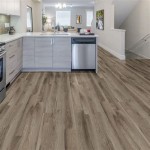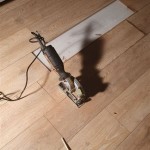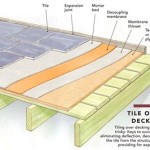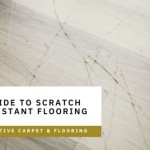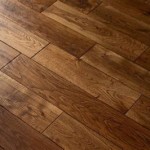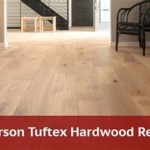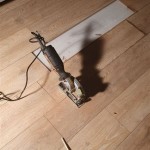Is Polypropylene Safe For LVP Flooring Installation?
Luxury Vinyl Plank (LVP) flooring has become an increasingly popular choice for homeowners and businesses alike due to its durability, aesthetic versatility, and relatively low cost. The installation process involves various underlayment materials, and one such material increasingly considered is polypropylene. The safety of polypropylene in this context is a key concern for consumers aiming to create healthy indoor environments.
This article will explore the properties of polypropylene, its applications in LVP flooring installation, and the potential safety considerations associated with its use. A comprehensive understanding of these factors is crucial for making informed decisions about flooring materials and ensuring the well-being of occupants.
Polypropylene is a thermoplastic polymer, meaning that it can be repeatedly softened by heating and hardened by cooling. It is produced from the polymerization of propylene gas, a byproduct of petroleum refining and natural gas processing. This polymer is known for its chemical resistance, high tensile strength, and resistance to fatigue. These attributes make it suitable for a wide range of applications, from packaging materials to textiles.
In the context of LVP flooring, polypropylene is often used as a component in underlayment materials. Underlayment is a layer of material installed between the subfloor and the finished flooring. Its purpose is to provide cushioning, reduce noise transmission, improve insulation, and create a level surface for the LVP planks. Polypropylene-based underlayments can come in various forms, including foam, woven fabrics, and non-woven fabrics.
The incorporation of polypropylene in underlayment is driven by several advantages. Its moisture resistance helps protect the LVP flooring from water damage caused by spills or subfloor moisture. The material’s durability contributes to the longevity of the flooring installation. Moreover, polypropylene is relatively lightweight, making it easier to handle and install compared to some alternative underlayment materials.
Understanding Potential Safety Concerns Associated with Polypropylene
Despite its beneficial properties, concerns regarding the safety of polypropylene in LVP flooring installation often arise. These concerns typically center around potential emissions of volatile organic compounds (VOCs), the presence of additives, and the recyclability of the material.
VOCs are organic chemicals that evaporate at room temperature. Certain VOCs can have adverse health effects, including respiratory irritation, headaches, and, in some cases, more serious health problems. The emission of VOCs from building materials, including flooring and underlayment, is a subject of scrutiny. The amount and type of VOCs emitted can vary depending on the manufacturing process, the specific composition of the polypropylene material, and the presence of additives.
While polypropylene itself is considered relatively inert and does not readily emit significant amounts of VOCs in its pure form, the manufacturing process can sometimes involve the use of additives, such as colorants, stabilizers, and flame retardants. Some of these additives may release VOCs. It is essential to examine the specific composition of the polypropylene underlayment and to look for certifications such as FloorScore or GREENGUARD, which indicate that the product has been tested and meets specific standards for low VOC emissions.
Furthermore, the potential for off-gassing is generally highest during the initial period after installation. Proper ventilation during and after installation can help to mitigate any potential exposure to VOCs. Allowing the material to air out before installation can also reduce initial emissions.
The Role of Additives in Polypropylene Underlayment
As previously mentioned, additives play a crucial role in determining the safety profile of polypropylene underlayment. These additives are incorporated to enhance certain properties of the material, such as its color, durability, and fire resistance. However, they can also introduce potential health concerns.
Flame retardants are a particularly important category of additives used in some polypropylene products. These chemicals are added to reduce the flammability of the material, making it safer in the event of a fire. However, some flame retardants have been linked to adverse health effects, including endocrine disruption and developmental problems. Newer flame retardants are generally considered safer than older formulations; however, it is still essential to check the product specifications and safety data sheets to understand the types of flame retardants used.
Other additives, such as plasticizers, may be used to improve the flexibility of the polypropylene. While not as prevalent in polypropylene as they are in other plastics like PVC, it is still important to be aware of their potential presence. Phthalates, a type of plasticizer, have raised concerns due to their potential endocrine-disrupting effects. Therefore, it is advisable to look for polypropylene underlayment that is labeled as phthalate-free.
The key to minimizing risks associated with additives is to choose products that have been independently tested and certified. Certifications such as GREENGUARD Gold indicate that the product has been tested for a wide range of chemicals and meets stringent emission standards. Transparency from the manufacturer regarding the specific additives used is also important for making informed decisions.
When evaluating polypropylene underlayment, it is also beneficial to consider the overall manufacturing process. Environmentally responsible manufacturers often utilize closed-loop systems that minimize waste and reduce the release of harmful chemicals into the environment. These manufacturers are also more likely to be transparent about the composition of their products.
Evaluating the Life Cycle and Environmental Impact of Polypropylene
Beyond potential health concerns related to VOCs and additives, the environmental impact of polypropylene is another crucial consideration when evaluating its safety for LVP flooring installation. This encompasses the material’s life cycle, from its production and use to its end-of-life disposal.
Polypropylene is derived from petroleum, a non-renewable resource. The extraction and processing of petroleum have significant environmental consequences, including greenhouse gas emissions and potential for pollution. However, polypropylene is also relatively energy-efficient to produce compared to some other plastics like PVC. Efforts to utilize recycled polypropylene in underlayment production can further reduce the environmental footprint.
At the end of its life, polypropylene waste can contribute to plastic pollution. Although polypropylene is technically recyclable, its actual rate of recycling is relatively low in many regions. The infrastructure for recycling polypropylene is not as well-established as it is for other materials like polyethylene terephthalate (PET). This means that a significant portion of polypropylene waste ends up in landfills or the environment.
In landfills, polypropylene can take hundreds of years to decompose. While it is considered a relatively stable plastic, it can still break down into smaller microplastics, which can contaminate soil and water resources. The presence of additives can also complicate the recycling process and potentially introduce harmful substances into the environment.
To mitigate the environmental impact of polypropylene, it is essential to prioritize products that are made from recycled content or that are designed for recyclability. Consumers can also support initiatives that promote the development of improved recycling infrastructure for polypropylene. Additionally, exploring alternative underlayment materials made from renewable resources, such as cork or natural rubber, can provide more sustainable options.
The overall environmental impact of polypropylene should be considered alongside its potential health effects. A holistic assessment that takes into account the entire life cycle of the material is crucial for making informed and responsible decisions.
In conclusion, the safety of polypropylene for LVP flooring installation is multifaceted and depends on several factors. While polypropylene itself is generally considered a stable and relatively inert material, potential concerns arise from the presence of additives, the release of VOCs, and the environmental impact of its production and disposal. By carefully evaluating product certifications, understanding the composition of the material, ensuring proper ventilation during installation, and considering the environmental impact, consumers can make informed decisions about the suitability of polypropylene underlayment for their specific needs and priorities.

Is Polypropylene Safe For Vinyl Plank Flooring Chemistry Everyone

Is Polypropylene Safe For Vinyl Floors Chemistry Everyone

What Rug Backing Is Safe For Vinyl Plank Flooring Detailed

What Rug Backing Is Safe For Vinyl Plank Flooring Detailed

Is Polypropylene Safe For Vinyl Floors Chemistry Everyone

Is Polyisocyanurate Safe With Vinyl Floor Plank

Is Polypropylene Safe For Vinyl Plank Flooring Chemistry Everyone

Plastic Deck Polypropylene Flooring Waterproof And Antiskid Herringbone Engineered Wood Installing Vinyl Plank Floor Colorful Made In Com

What Rug Backing Is Safe For Vinyl Plank Flooring Detailed

Non Toxic Vinyl Plank Flooring Brands The Risks My Chemical Free House
See Also
